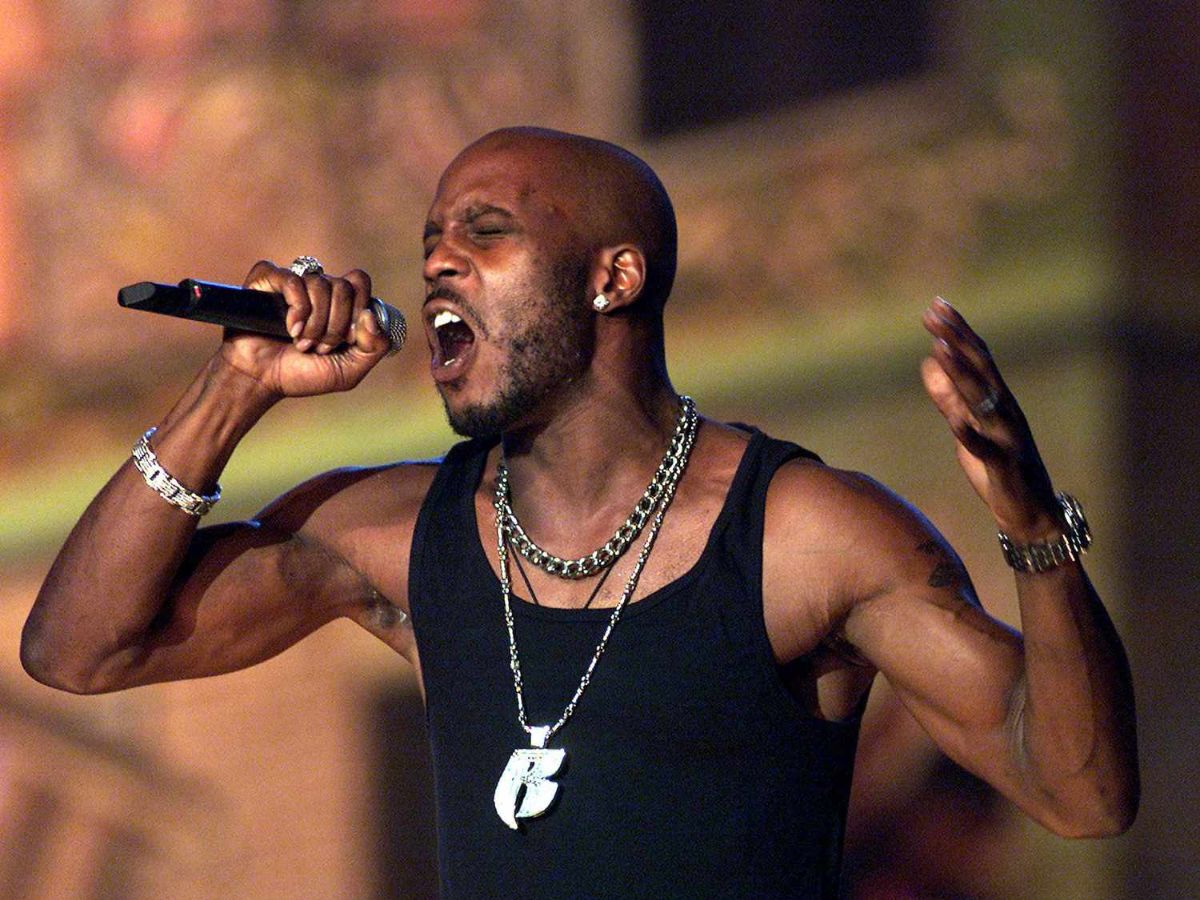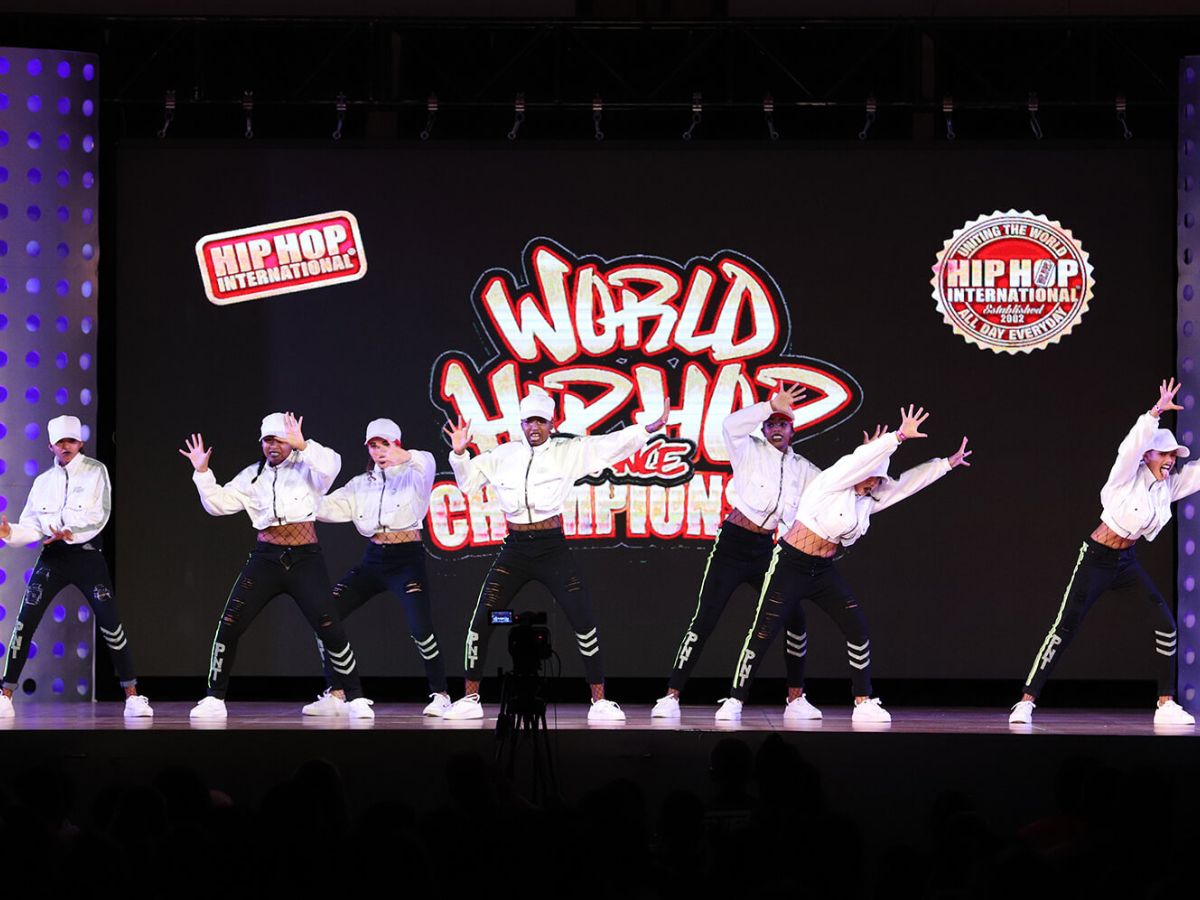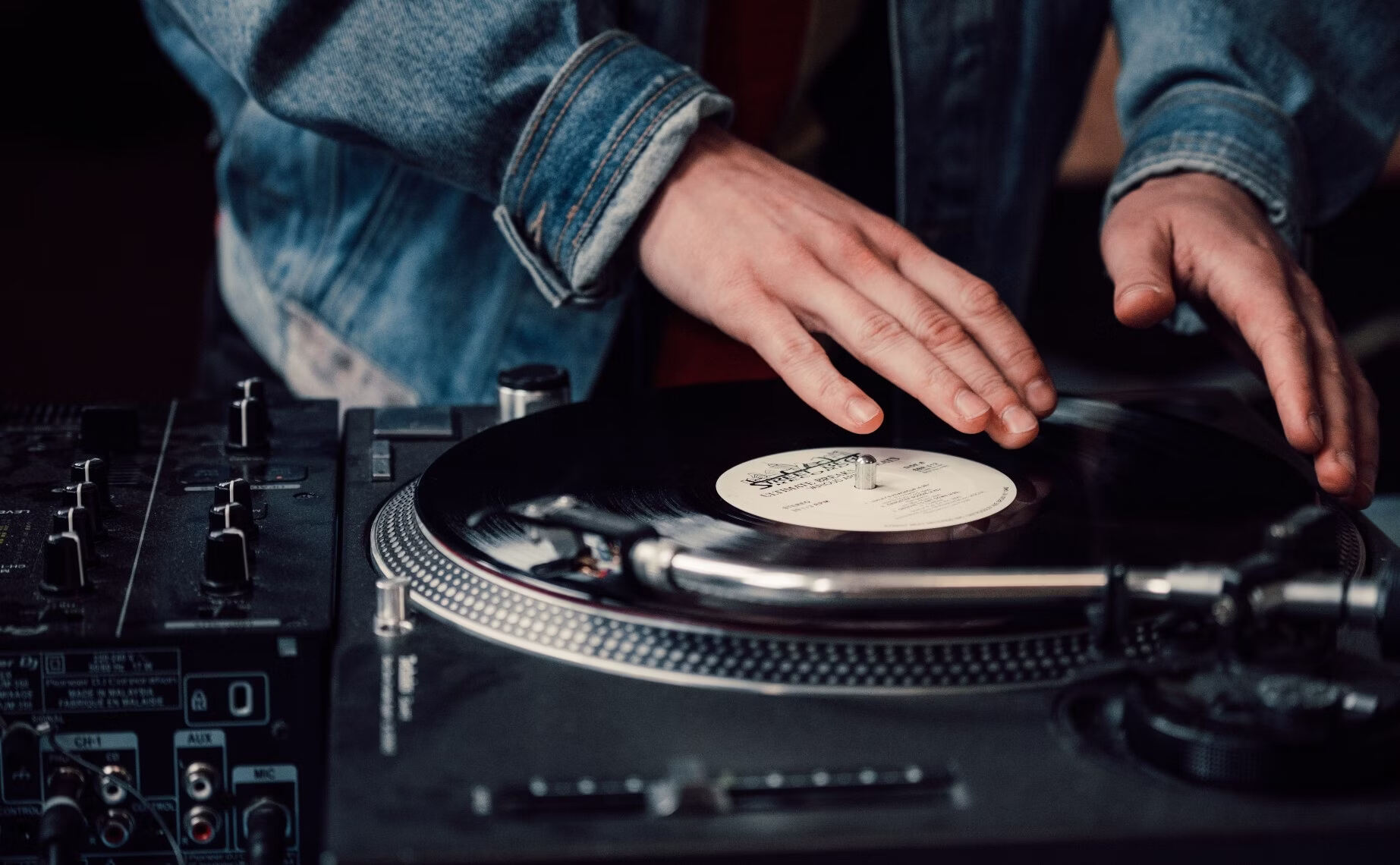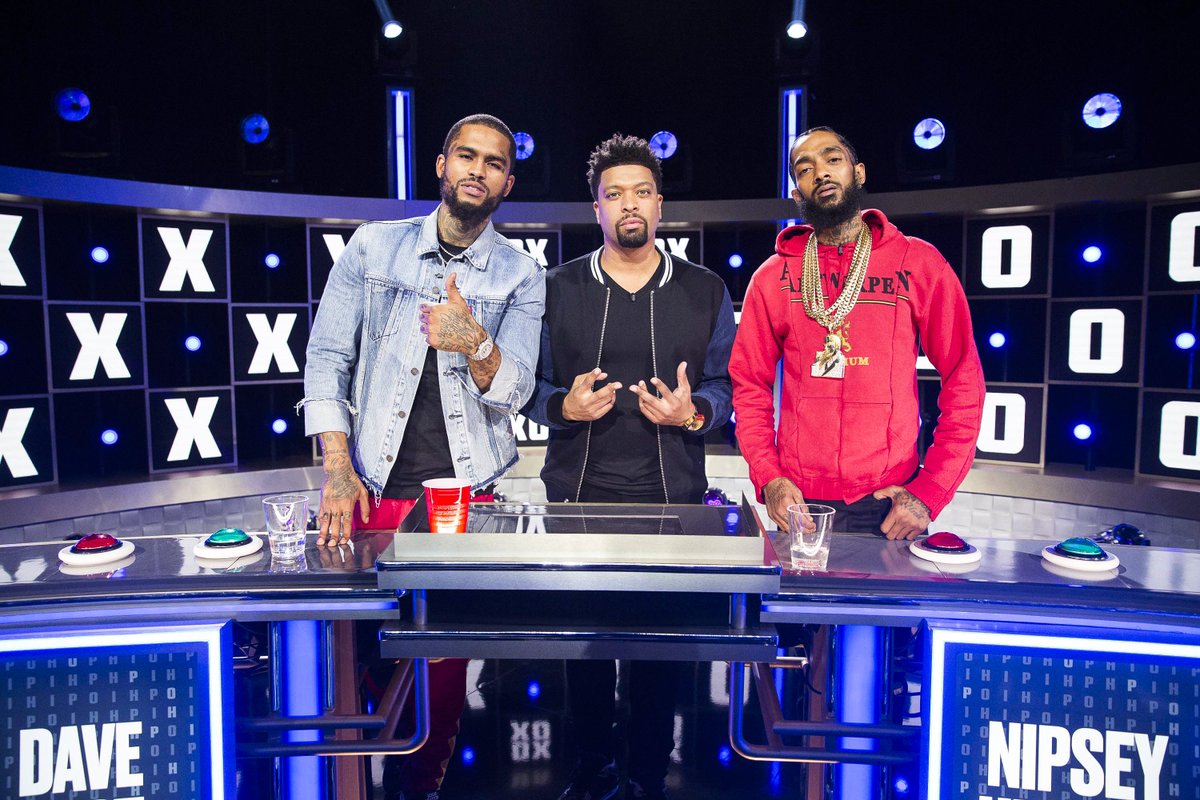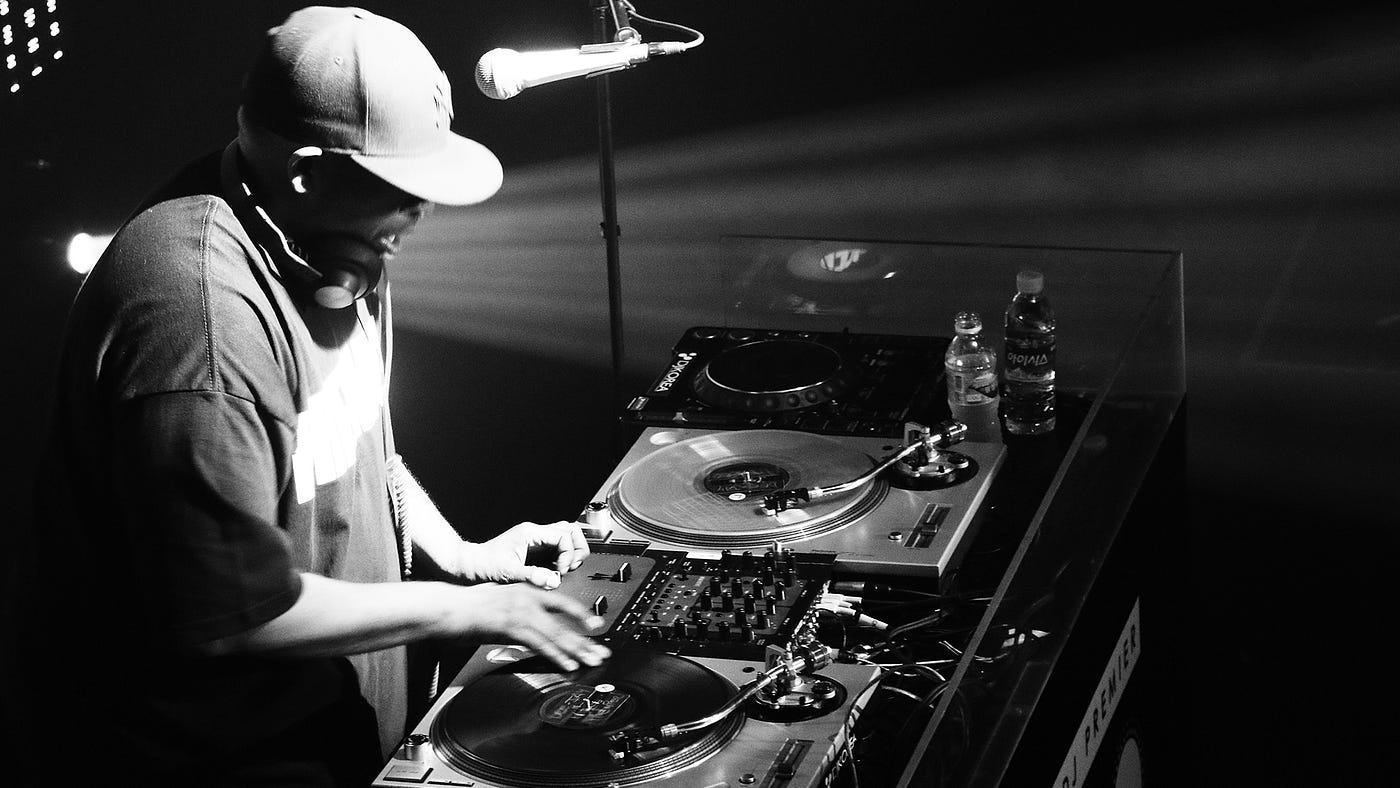

Hip Hop
What Other Genres Influenced Hip Hop
Modified: February 15, 2024
Learn about the diverse influences on Hip Hop, from jazz to funk and soul. Explore how these genres shaped the evolution of this iconic music movement.
(Many of the links in this article redirect to a specific reviewed product. Your purchase of these products through affiliate links helps to generate commission for AudioLover.com, at no extra cost. Learn more)
Table of Contents
Introduction
Hip hop, a genre that originated in the vibrant streets of New York City in the 1970s, has had a profound impact on music and culture across the globe. At its core, hip hop is a combination of rap vocals, intricate beats, and samples, creating a unique and dynamic sound. However, hip hop did not develop in isolation; it draws inspiration and influence from a wide range of musical genres.
This article delves into the diverse array of genres that have played a significant role in shaping hip hop. From jazz to funk, R&B to rock and roll, reggae to soul, and many more, each genre has contributed a distinct element to hip hop’s evolution. Understanding these influences is crucial to appreciate the depth and richness of the hip hop genre.
Over the years, hip hop artists have creatively incorporated elements from these genres, infusing their own style and lyrical prowess to create groundbreaking music. By exploring the origins and characteristics of these genres, we can better understand and appreciate hip hop’s artistic development.
So, join us on this journey as we dive into the world of music and explore the genres that have influenced hip hop. From the soulful melodies of jazz to the infectious rhythms of funk, the article will provide an in-depth analysis of each genre’s impact on hip hop.
Jazz
Jazz, with its improvisational nature and rich musical traditions, has had a profound influence on the development of hip hop. Originating in the African American communities of New Orleans in the late 19th century, jazz provided a unique blend of syncopated rhythms, melodic improvisation, and expressive instrumentation.
One of the most significant contributions of jazz to hip hop is its emphasis on improvisation. Jazz musicians would often engage in spontaneous solos, allowing their creativity to shine through. This concept of freestyling and improvising directly influenced the art of rap, as MCs would freestyle over beats and create spontaneous verses.
Furthermore, jazz samples have been a staple in hip hop production. Producers would often sample jazz records, extracting snippets of melodies, horn sections, and drum breaks. These samples would be manipulated, chopped, and rearranged to create the foundation of hip hop beats. Some notable jazz samples used in hip hop include Miles Davis’ “Bitches Brew” in Nas’ “Life’s a Bitch” and Herbie Hancock’s “Watermelon Man” in Gang Starr’s “Dwyck.”
Artists like A Tribe Called Quest, The Roots, and Guru have seamlessly blended jazz elements into their music, fusing the genre’s sophisticated harmonies and intricate rhythms with the raw energy of hip hop. This fusion not only expanded the sonic palette of hip hop but also bridged the gap between the old and the new, paying homage to the jazz greats while pushing the boundaries of the genre.
Jazz’s influence on hip hop extends beyond just the music. The ethos of jazz, characterized by individual expression, collaboration, and creative freedom, has seeped into the culture surrounding hip hop. The improvisational nature of jazz aligns with the improvisational style of freestyle rap battles, where MCs engage in verbal sparring and quick-witted wordplay.
In summary, jazz has left an indelible mark on hip hop, shaping not only its musical sound but also its cultural ethos. The spirit of jazz continues to inspire hip hop artists to push the boundaries of creativity, resulting in a genre that is constantly evolving and innovating.
Funk
Funk, with its infectious grooves, heavy basslines, and rhythmic complexity, has had a significant impact on the evolution of hip hop. Emerging in the 1960s and 1970s, funk music was characterized by its emphasis on rhythm and the tight interplay between instruments.
Funk’s contribution to hip hop can be seen in its rhythmic foundation. The genre’s drum patterns, syncopated rhythms, and emphasis on the “one” have heavily influenced hip hop production. The iconic drum breaks from James Brown’s records, such as “Funky Drummer” and “The Payback,” became a key ingredient in the creation of hip hop beats. These loops would be sampled and looped, forming the backbone of countless hip hop tracks.
Beyond drum breaks, funk’s basslines have also played a crucial role in shaping hip hop’s musical landscape. The deep, funky basslines in songs by artists like Parliament-Funkadelic and Earth, Wind & Fire became essential elements in hip hop production, providing a solid foundation for rap vocals and creating a groove that was impossible to resist.
The influence of funk can also be heard in the vocal style and delivery of many hip hop artists. The energetic and rhythmic flow of funk singers like James Brown and George Clinton laid the groundwork for rap’s rhythmic and lyrical cadence. The charismatic and expressive stage presence of funk performers influenced the performance aspect of hip hop, with MCs striving to command the stage with their charismatic presence and dynamic delivery.
Notable hip hop artists, such as Dr. Dre, Public Enemy, and Outkast, have incorporated heavy doses of funk into their music, blending the genre’s raw energy with the gritty lyricism of hip hop. This fusion resulted in groundbreaking tracks like Dr. Dre’s “Nuthin’ but a ‘G’ Thang,” which samples Leon Haywood’s “I Want’a Do Something Freaky to You,” and Outkast’s “SpottieOttieDopaliscious,” which features a live brass section reminiscent of classic funk bands.
Overall, funk has left an indelible imprint on hip hop, infusing it with its infectious grooves, rhythmic complexity, and expressive performances. The genre’s influence can be heard in the beats, basslines, vocal deliveries, and overall energy of hip hop music. Funk’s impact on hip hop is a testament to the ongoing cycle of musical influence and creative adaptation that defines the evolution of genres.
R&B
R&B, short for rhythm and blues, has played a significant role in shaping the sound and style of hip hop. Originating in the 1940s, R&B combined elements of jazz, blues, and gospel music, providing a foundation for the development of popular music in America.
One of the key contributions of R&B to hip hop is its melodic and soulful vocal style. R&B artists like Marvin Gaye, Stevie Wonder, and Aretha Franklin brought a level of emotion and expressiveness to their singing that has influenced hip hop artists in their delivery and storytelling. The melisma and vocal runs commonly found in R&B are often incorporated by MCs in their rap verses, adding a melodic element to their lyrical flow.
In addition to the vocal style, R&B’s smooth and groovy instrumentation has had a profound impact on hip hop production. Hip hop producers have often sampled R&B tracks, extracting melodic hooks, basslines, and drum patterns to create the backbone of their beats. The usage of R&B samples can be heard in iconic hip hop songs such as The Notorious B.I.G’s “Juicy” which samples Mtume’s “Juicy Fruit” and Mary J. Blige’s “Real Love” which samples “Top Billin'” by Audio Two.
The influence of R&B is not limited to just sampling; artists have also collaborated and merged genres to create beautiful blends of R&B and hip hop. Acts like Lauryn Hill, Usher, and Chris Brown have seamlessly combined elements from both genres, creating music that appeals to a wide audience. These collaborations have resulted in chart-topping hits and have further blurred the lines between R&B and hip hop.
Furthermore, R&B’s impact on hip hop can be seen in the incorporation of slow jams and love ballads in rap music. This fusion of rap and R&B, often referred to as “hip hop soul,” brings together the emotionally driven lyrics and smooth melodies synonymous with R&B and the rhythmic and poetic nature of rap.
Overall, R&B has left an indelible mark on hip hop, influencing its vocal style, production techniques, and collaborative efforts. The seamless integration of R&B and hip hop has resulted in a diverse and vibrant musical landscape, providing a platform for artists to express themselves and connect with listeners on a deeper emotional level.
Rock and Roll
Rock and roll, with its rebellious spirit and electrifying energy, has made a significant impact on the development of hip hop. Emerging in the 1950s as a fusion of various genres, including blues, country, and rhythm and blues, rock and roll’s influence can be heard in the attitude, style, and musical elements of hip hop.
One of the key contributions of rock and roll to hip hop is its raw and energetic instrumentation. The electrifying guitar solos, pounding drums, and powerful vocals characteristic of rock and roll have inspired hip hop artists to infuse their music with a sense of urgency and intensity. Artists like Run-DMC and Public Enemy incorporated rock elements into their songs, blending genres and pushing the boundaries of traditional hip hop sound.
In addition to the instrumentation, the rebellious and anti-establishment ethos of rock and roll has resonated with hip hop’s roots. Both genres have used music as a form of rebellion and cultural expression, giving a voice to marginalized communities and challenging the status quo. This shared spirit of resistance has allowed hip hop artists to draw inspiration from the defiance and social commentary prevalent in rock music.
Furthermore, samples from rock and roll classics have been extensively used in hip hop production. Producers have creatively incorporated guitar riffs, drum patterns, and vocal hooks from iconic rock songs to add a new dimension to their beats. Notable examples include Beastie Boys’ use of the guitar riff from Led Zeppelin’s “Kashmir” in their track “Rhymin and Stealin” and Jay-Z’s sampling of the guitar solo from Aerosmith’s “Dream On” in “Run This Town.
Rock and roll’s influence on hip hop extends beyond just the musical aspect. The fashion sense and style associated with rock and roll have permeated hip hop culture. From leather jackets and ripped jeans to band t-shirts and wild hairstyles, hip hop artists have embraced the edginess and individuality inherent in rock and roll fashion.
In summary, rock and roll has made a lasting impact on hip hop, influencing its musical style, rebellious attitude, and fashion choices. The fusion of these two genres has resulted in dynamic and genre-defying music, expanding the sonic possibilities and pushing the boundaries of creative expression in hip hop.
Reggae
Reggae, the genre born in Jamaica in the late 1960s, has had a profound influence on the development of hip hop. With its laid-back grooves, conscious lyrics, and distinctive rhythmic patterns, reggae brought a unique flavor to hip hop’s musical landscape.
One of the key contributions of reggae to hip hop is its emphasis on social and political messages. Reggae artists like Bob Marley, Peter Tosh, and Burning Spear used their music as a platform to address injustices, advocate for equality, and spread messages of love and unity. Hip hop artists, inspired by reggae’s conscious lyricism, embraced similar themes in their music, addressing social issues and giving a voice to the marginalized.
Beyond the lyrical content, reggae’s signature rhythm, known as the “one drop,” has made its mark on hip hop. The emphasis on the offbeat and the syncopated guitar skanks characteristic of reggae have been incorporated into hip hop production. The influence of reggae’s rhythmic patterns can be heard in songs like The Fugees’ “Ready or Not,” which samples Enya’s “Boadicea” and adds a reggae-infused beat.
In addition to the musical elements, reggae’s commitment to dance and movement has influenced the hip hop culture. Dancehall, a subgenre of reggae characterized by its energetic and expressive dancing, has inspired hip hop dancers to incorporate Jamaican dance moves into their routines. This cross-pollination of dance styles has contributed to the vibrant and dynamic nature of hip hop performances.
Samples from reggae classics have also been utilized in hip hop production, adding a distinct reggae flavor to the beats. Artists like Kanye West and Kendrick Lamar have integrated reggae samples into their tracks, fusing the genres and creating a unique blend. For example, Kendrick Lamar’s “King Kunta” samples “The Champ” by The Mohawks and interpolates lyrics from Barrington Levy’s reggae hit “Under Mi Sensi.”
Overall, reggae has left an indelible imprint on hip hop, influencing its lyrical content, rhythmic patterns, dance styles, and production techniques. The fusion of reggae and hip hop has resulted in a diverse and socially conscious genre, channeling both the laid-back vibes of Jamaica and the urban grit of hip hop.
Soul
Soul music, with its powerful vocals, emotional depth, and authentic storytelling, has had a profound impact on the development of hip hop. Originating in the African American communities during the 1950s and 1960s, soul music provided a foundation for the expression of joy, pain, and resilience.
One of the key contributions of soul music to hip hop is its emphasis on heartfelt vocals and emotional delivery. Legendary soul artists like James Brown, Aretha Franklin, and Al Green brought a level of passion and soulfulness to their singing that has influenced hip hop artists in their approach to lyricism and vocal performances. The gritty and raw nature of soul vocals paved the way for the raw lyricism and intense delivery of many hip hop artists.
In addition to the vocal style, soul’s lush and orchestrated instrumentation has played a significant role in shaping hip hop production. Producers have often sampled soul records, incorporating elements such as horn sections, string arrangements, and piano melodies into their beats. These samples add a soulful and melodic layer to hip hop tracks. Notable examples include Kanye West’s sampling of Ray Charles’ “I Got a Woman” in “Gold Digger” and The Notorious B.I.G.’s use of Mtume’s “Juicy Fruit” in “Juicy.”
Soul music also influenced the lyrical content of hip hop, encouraging artists to delve into personal experiences, express their truths, and touch on social issues. The introspective and introspective nature of soul lyrics inspired hip hop artists to infuse their music with storytelling and introspection, paving the way for poignant narratives and conscious rhymes. Artists like Lauryn Hill, Erykah Badu, and D’Angelo have seamlessly blended soul and hip hop, creating a unique fusion that resonates with audiences around the world.
Furthermore, soul’s influence on hip hop can be seen in the aesthetics and fashion choices of artists. The style and fashion associated with soul music, including afros, bell-bottom pants, and colorful outfits, have been embraced by hip hop artists, becoming synonymous with the culture. This blending of soul and hip hop aesthetics has resulted in a vibrant and expressive fashion sense within the hip hop community.
In summary, soul music has had a profound impact on hip hop, influencing its vocal delivery, production techniques, lyrical themes, and fashion choices. The fusion of soul and hip hop has created a genre that embodies vulnerability, authenticity, and emotional expression, positioning hip hop as a powerful form of artistic storytelling.
Disco
Disco, the genre that dominated dance floors in the 1970s, has had a significant influence on the development of hip hop. With its infectious grooves, vibrant energy, and emphasis on rhythm and dance, disco provided a blueprint for the evolution of dance-oriented hip hop music.
One of the key contributions of disco to hip hop is its use of 4/4 beats and driving basslines. The thumping rhythm and pulsating bass of disco tracks became a foundation for hip hop producers in creating energetic and danceable beats. The rhythmic elements of disco can be heard in classic hip hop tracks like Sugarhill Gang’s “Rapper’s Delight,” which sampled Chic’s “Good Times” and laid the foundation for the emergence of rap as a mainstream genre.
In addition to the rhythmic aspect, disco’s emphasis on celebration and escapism resonated with the emerging hip hop culture. Both disco and hip hop provided a sense of community and allowed people to express themselves through dance. Disco’s carefree and inclusive nature influenced the development of hip hop dance culture, with breakdancing and freestyle dancing becoming essential elements of the genre.
Furthermore, disco’s influence can be seen in hip hop fashion and style. The flamboyant and glamorous fashion sense associated with disco, including sparkly outfits, platform shoes, and wide-collar shirts, have made their way into the hip hop scene. Artists like Grandmaster Flash and the Furious Five incorporated disco-inspired fashion into their performances, bringing a visual flair that mirrored the glitz and glamour of the disco era.
Disco samples have also been extensively used in hip hop production, adding a nostalgic and funky element to the beats. Producers would sample disco tracks, extracting catchy hooks, horn sections, and lush string arrangements, and incorporating them into their own compositions. Notable examples include Jay-Z’s sampling of Sister Sledge’s “He’s the Greatest Dancer” in “I Just Wanna Love U (Give It 2 Me)” and The Notorious B.I.G.’s use of Diana Ross’ “I’m Coming Out” in “Mo Money Mo Problems.”
In summary, disco has left a lasting imprint on hip hop, influencing its beats, dance culture, fashion, and sampling techniques. The fusion of disco and hip hop has created a vibrant and celebratory genre that continues to evolve and thrive. Disco’s legacy in hip hop is a testament to the genre’s enduring influence on popular music and culture.
Electronic Music
Electronic music, with its innovative sounds and futuristic sensibilities, has had a significant impact on the evolution of hip hop. Emerging in the mid-20th century, electronic music provided a new sonic palette and technological advancements that influenced hip hop’s production techniques and soundscapes.
One of the key contributions of electronic music to hip hop is its utilization of synthesizers and drum machines. These electronic instruments allowed for the creation of unique and otherworldly sounds, providing hip hop producers with endless possibilities for creating innovative beats and melodies. The iconic Roland TR-808 drum machine, known for its deep bass and distinctive drum sounds, became a staple in hip hop production, shaping the genre’s sonic identity.
In addition to the equipment, electronic music’s emphasis on experimentation and manipulating sounds opened doors for hip hop producers to push the boundaries of traditional music production. Artists like Dr. Dre and DJ Premier incorporated electronic elements into their beats, introducing unconventional sounds and layered textures that added a new dimension to hip hop. Electronic music’s influence can be heard in tracks like Dr. Dre’s “Nuthin’ but a ‘G’ Thang,” which features a prominent synthesizer riff, and DJ Premier’s production on Gang Starr’s “Mass Appeal,” which incorporates electronic samples and effects.
Furthermore, electronic music’s influence on hip hop extends to the realm of sampling. Hip hop producers have often sampled electronic tracks, extracting catchy melodies, synthesizer hooks, and futuristic sound effects. These samples have been manipulated and recontextualized to create new compositions within the hip hop genre. Notable examples include Kanye West’s sampling of Daft Punk’s “Harder, Better, Faster, Stronger” in “Stronger” and Afrika Bambaataa and the Soulsonic Force’s use of Kraftwerk’s “Trans-Europe Express” in “Planet Rock.”
Electronic music has also impacted hip hop performance and live shows. The use of turntables, drum machines, and sampler instruments during live performances allows hip hop artists to create dynamic and improvised electronic-infused sets. Artists like J Dilla and DJ Shadow incorporated electronic elements into their live shows, creating a unique blend of hip hop and electronic music that captivated audiences.
In summary, electronic music has had a significant influence on hip hop, shaping its production techniques, soundscapes, and live performances. The fusion of these two genres has resulted in a fusion of futuristic sounds, innovative production, and genre-defying collaborations. Electronic music continues to inspire and push the boundaries of hip hop, ensuring the constant evolution and innovation of the genre.
Latin Music
Latin music, with its vibrant rhythms, passionate melodies, and rich cultural heritage, has made a significant impact on the development and evolution of hip hop. Originating from various Latin American countries, including Puerto Rico, Cuba, and the Dominican Republic, Latin music has infused hip hop with its infectious energy and diverse musical styles.
One of the key contributions of Latin music to hip hop is its rhythmic foundation. Latin genres such as salsa, merengue, bachata, and reggaeton are known for their upbeat and danceable rhythms, characterized by complex syncopated patterns and polyrhythms. These rhythmic elements have influenced hip hop production, with producers incorporating Latin rhythms into their beats, adding a dynamic and groovy flair. Notable examples include the fusion of reggaeton and hip hop in songs like Daddy Yankee’s “Gasolina” and J Balvin’s collaboration with Bad Bunny on “I Like It.”
In addition to the rhythms, Latin music has also influenced hip hop through its lyrical storytelling. Latin artists often weave vivid narratives, express emotions, and address social issues through their lyrics, reflecting the cultural and political landscapes of their respective countries. This storytelling tradition has been embraced by hip hop artists, who incorporate personal narratives, social commentary, and poetic storytelling into their rap verses. Artists like Cypress Hill and Immortal Technique have used their music to shed light on social injustices and immigrant experiences, drawing inspiration from the lyrical depth of Latin music.
Latin music has also played a significant role in the evolution of hip hop through collaboration and cross-genre fusion. Artists from both genres have come together to create groundbreaking music that blends Latin and hip hop elements. Collaborations like Cardi B and Bad Bunny’s “I Like It” and Pitbull’s international hits have helped bridge gaps between different cultures and brought new audiences to appreciate the fusion of Latin and hip hop genres.
Furthermore, Latin samples have been widely used in hip hop production, adding a unique flavor to the beats. Producers have incorporated samples from Latin tracks, extracting melodies, horn sections, and percussion elements to create a fusion of Latin and hip hop sounds. Notable examples include Fat Joe’s sampling of Tito Puente’s “Oye Como Va” on “Lean Back” and Jennifer Lopez’s use of the horn section from Pete Rodriguez’s “I Like It Like That” in “Jenny from the Block.”
In summary, Latin music has had a significant impact on hip hop, influencing its rhythmic patterns, lyrical storytelling, collaborative efforts, and sampling techniques. The fusion of Latin and hip hop genres has resulted in an exciting and vibrant musical landscape, showcasing the power of cultural exchange and artistic collaboration.
Pop Music
Pop music, with its catchy melodies, mainstream appeal, and emphasis on commercial success, has played a significant role in shaping the sound and direction of hip hop. Emerging in the mid-20th century as a genre focused on popular appeal, pop music has influenced hip hop in various ways, from production techniques to lyrical themes.
One of the key contributions of pop music to hip hop is its hook-driven songwriting. Pop music is known for its infectious and memorable melodies that stick in the listeners’ minds. Hip hop artists have adopted this approach, incorporating catchy hooks and melodic choruses into their songs. This combination of rap verses with melodic hooks has helped bridge the gap between hip hop and mainstream audiences, resulting in crossover hits and widespread popularity.
In addition to the melodic aspect, pop music’s production techniques have had a significant influence on hip hop. Pop music often incorporates electronic elements, synthesizers, and polished production styles to create a polished and glossy sound. Hip hop producers have borrowed these techniques, incorporating electronic and synthesized elements into their beats, adding a contemporary and commercial edge to their music.
The influence of pop music on hip hop can also be seen in the collaborative efforts between artists from both genres. Collaborations between pop stars and hip hop artists have led to chart-topping hits and expanded the sonic possibilities of both genres. Artists like Beyoncé and Jay-Z, Justin Timberlake and Timbaland, and Rihanna and Drake have created successful collaborations that blend the best of pop and hip hop, attracting a wide range of listeners.
Furthermore, pop music’s impact on hip hop extends to the incorporation of diverse influences and genres. Pop music has been known to experiment with various styles and sounds, incorporating elements of R&B, rock, dance, and electronic music. Hip hop has embraced this eclecticism, drawing inspiration from different genres and fusing them with its core elements. This blending of styles has resulted in a diverse and versatile hip hop landscape that appeals to a broad audience.
Pop music has also influenced the lyrical themes of hip hop. While hip hop has traditionally been associated with storytelling, social commentary, and personal experiences, the influence of pop music has brought a lighter and more playful tone to some hip hop tracks. Pop-influenced hip hop songs often focus on themes of love, relationships, partying, and self-expression, reflecting the lighter side of popular culture.
In summary, pop music has played a substantial role in shaping hip hop’s sound, production techniques, collaborative efforts, and lyrical themes. The fusion of pop and hip hop has resulted in a genre that combines catchy melodies, commercial appeal, and diverse influences, capturing the attention of mainstream audiences while continuing to push the boundaries of creative expression.
Country Music
Country music, with its heartfelt storytelling, twangy melodies, and proud regional identity, has had an unexpected influence on the development of hip hop. While the two genres may seem vastly different, there are notable connections that have resulted in unique collaborations and musical innovations.
One of the key contributions of country music to hip hop is its emphasis on storytelling. Country songs have a long tradition of telling narratives about love, heartbreak, hard work, and the trials of everyday life. This storytelling element has resonated with hip hop artists who have embraced the art of lyricism and brought their own personal stories to the forefront. The introspective and emotionally charged storytelling in hip hop has its roots in the tradition of country music.
In addition to the lyrical aspect, country music’s use of acoustic guitars, fiddles, and banjos has influenced the production style of hip hop. Producers have incorporated elements of country instrumentation, samples, and melodies into their beats, creating a unique fusion of hip hop and country sounds. This blending of genres can be heard in tracks like Nelly’s “Over and Over” featuring Tim McGraw, which combines country-style guitar riffs with rap verses.
Furthermore, country music’s emphasis on regional pride and cultural heritage has influenced hip hop’s exploration of local sounds and identities. Artists like Outkast and Nappy Roots have integrated elements of southern culture and country music aesthetics into their music, showcasing the diversity and richness of their Southern roots. This cultural exchange has allowed for artistic innovation and hybridization, resulting in a diverse range of hip hop subgenres and regional styles.
Country music has also been sampled in hip hop production, adding an unexpected but intriguing dimension to the beats. Producers have integrated snippets of classic country songs, capturing catchy melodies, guitar riffs, and vocal hooks to create hybrid compositions. Notable examples include Lil Nas X’s “Old Town Road,” which blends country elements with rap and became a viral sensation, and Kid Rock’s use of Lynyrd Skynyrd’s “Sweet Home Alabama” in his track “All Summer Long.”
In summary, country music has left a lasting impact on hip hop, influencing its storytelling, production techniques, regional pride, and cultural exchanges. The fusion of country and hip hop has broken down musical barriers, challenging traditional genre boundaries and opening new avenues for creative expression. This cross-pollination has expanded the sonic possibilities of both genres, resulting in a vibrant and diverse musical landscape.
Classical Music
Classical music, with its sophisticated compositions, rich harmonies, and timeless beauty, has had a subtle but profound influence on the development and evolution of hip hop. Although seemingly at odds with each other, classical music and hip hop have found common ground through their dedication to musical craftsmanship and the exploration of new sonic territories.
One of the key contributions of classical music to hip hop is its focus on musicality and intricate compositions. Classical music’s emphasis on complex harmonies, orchestration, and compositional techniques has inspired hip hop producers to experiment with intricate arrangements and layered soundscapes. Classical elements, such as symphonic samples, grandiose piano melodies, and dramatic strings, have been incorporated into hip hop beats, adding a touch of elegance and sophistication to the genre.
Furthermore, classical music’s use of dynamics and crescendos has influenced the production style of hip hop. Hip hop tracks often employ dramatic build-ups, drops, and shifts in intensity to create a sense of tension and release. This arrangement technique mirrors the dynamics found in classical music compositions, allowing hip hop to evoke emotional responses and captivate listeners.
The influence of classical music can also be seen in the sampling techniques of hip hop producers. Classical compositions, such as those by Beethoven, Mozart, and Tchaikovsky, have been sampled and reimagined, providing a unique twist to hip hop tracks. These samples add a layer of sophistication and timelessness to the beats, bridging the gap between classical music’s legacy and hip hop’s contemporary sound. Notable examples include Nas’ sampling of Beethoven’s “Fur Elise” in his track “I Can” and Wu-Tang Clan’s use of composer Wendy Carlos’ “Sprockets” in their song “Wu-Tang Clan Ain’t Nuthing ta F’ Wit.”
In addition to production techniques, classical music’s influence can be heard in the compositions and arrangements of hip hop artists. Artists like Kendrick Lamar and J. Cole have incorporated orchestral instrumentation, live strings, and choirs into their tracks, elevating the sound and adding a grandiose element. This infusion of classical elements brings a unique depth and complexity to their music.
Furthermore, classical music has influenced hip hop in its embrace of sampling and reinterpretation. Just as classical composers like Bach and Handel would borrow and reinterpret themes from previous works, hip hop artists have taken this tradition to new heights by sampling classical compositions and recontextualizing them within their own artistic vision.
In summary, classical music has made its mark on hip hop, influencing its production techniques, sampling practices, composition styles, and use of orchestral elements. The fusion of classical and hip hop has resulted in a genre that blends artistic sophistication with modern sensibilities. This cross-genre collaboration showcases the timeless and universal power of music to transcend boundaries and create something truly unique and compelling.
Conclusion
The influence of various musical genres on hip hop has been instrumental in shaping the genre’s evolution and cultural impact. From the improvisational nature of jazz to the infectious grooves of funk, the emotional depth of soul to the rebellion of rock and roll, the rhythmic foundation of reggae to the electronic experimentation of electronic music, the vibrant rhythms of Latin music to the catchy melodies of pop music, and the insightful storytelling of country music to the sophistication of classical compositions, each genre has left an indelible mark on hip hop.
These genre influences have influenced not only the musical elements of hip hop but also its cultural ethos, fashion choices, and performance styles. Jazz and funk brought improvisation and raw energy, inspiring freestyle rap battles and dynamic stage performances. R&B and soul infused hip hop with heartfelt melodies, emotional delivery, and lyrical depth. Rock and roll provided an edgy attitude and electrifying instrumentation. Reggae brought conscious lyrics, rhythmic patterns, and a sense of unity. Electronic music pushed the boundaries of production techniques and introduced futuristic sounds. Latin music added infectious rhythms, cultural pride, and diverse influences. Pop music brought catchy hooks, commercial appeal, and collaborative efforts. Country music added storytelling and cultural exchanges. Classical music brought intricate compositions, dynamic arrangements, and timeless beauty.
The fusion of these genres with hip hop has resulted in a genre that defies boundaries and pushes artistic experimentation. These influences have allowed hip hop artists to create music that is dynamic, diverse, and constantly evolving. The connections between these genres and hip hop continue to inspire new artists and redefine the boundaries of what is possible in music.
As hip hop continues to grow and evolve, it is important to recognize and appreciate the rich tapestry of influences that have shaped the genre. Through the combination of these diverse musical styles, hip hop has become a powerful tool for expression, storytelling, social commentary, and cultural exchange. The ongoing blend of genres contributes to the vibrancy and artistic depth of hip hop, ensuring its continued relevance and impact on music and culture worldwide.





